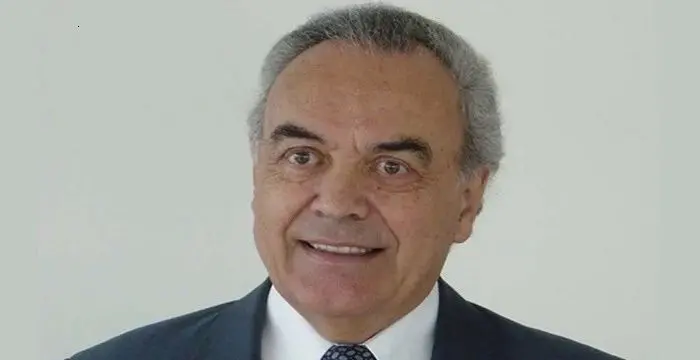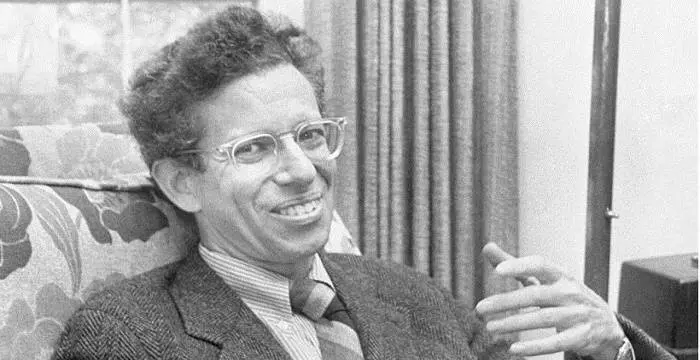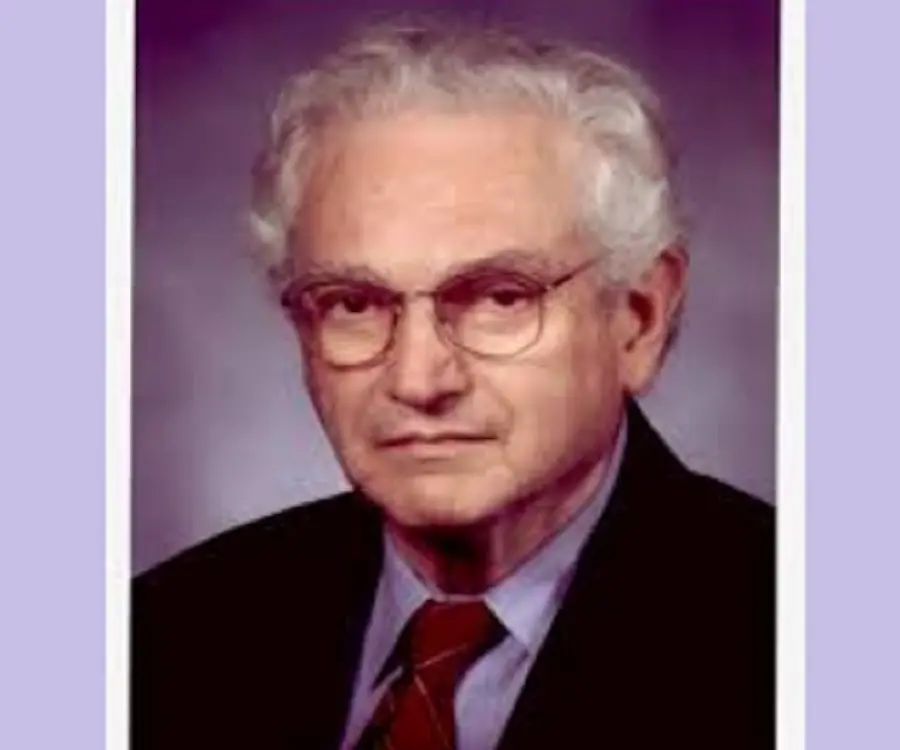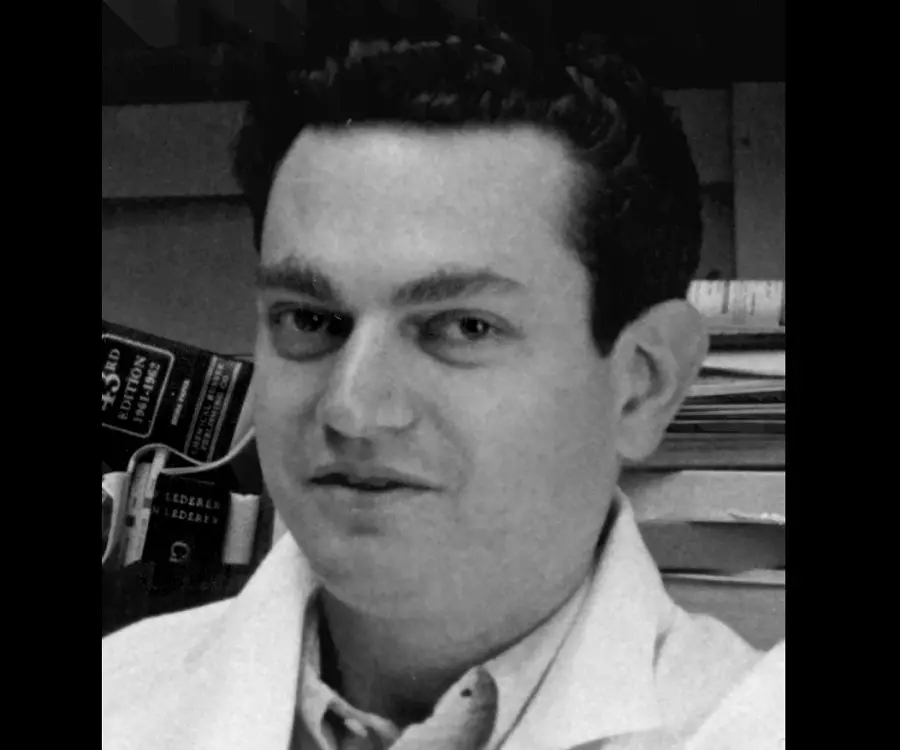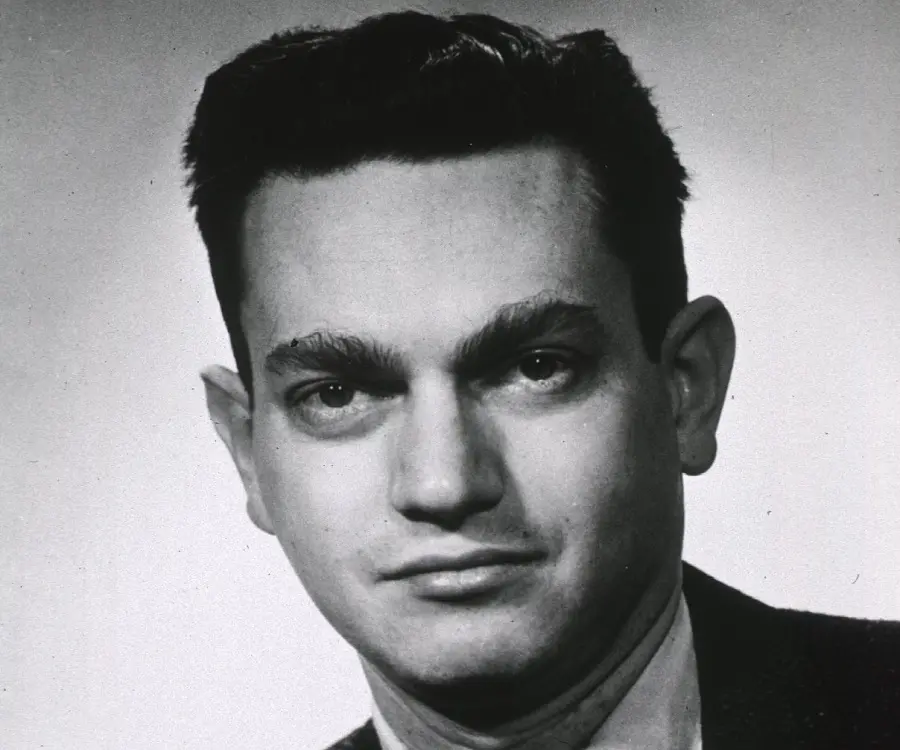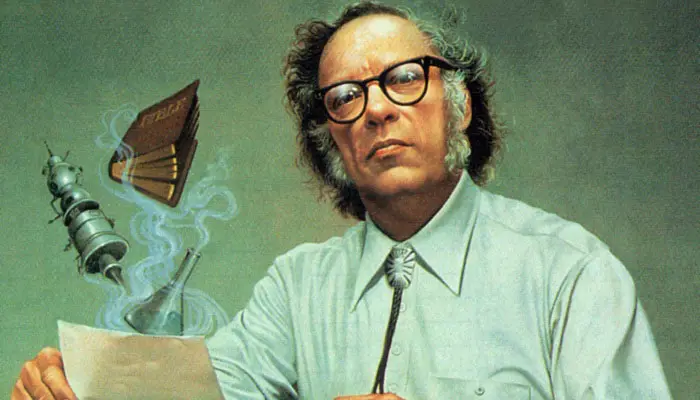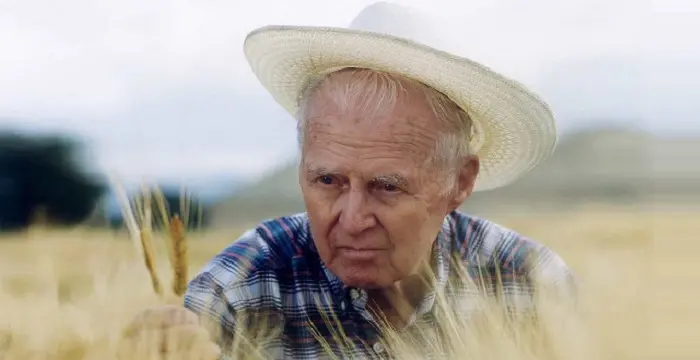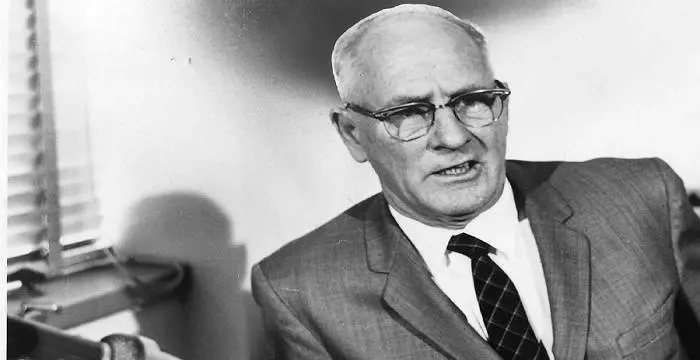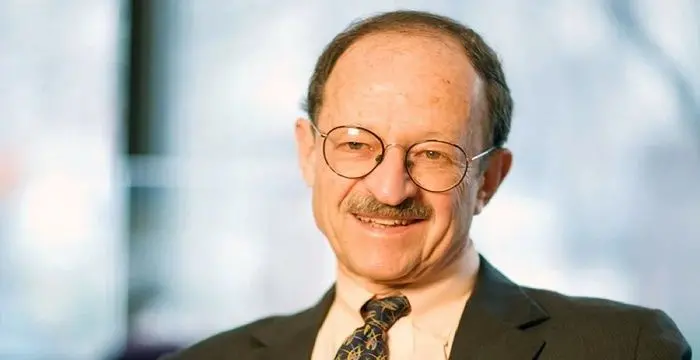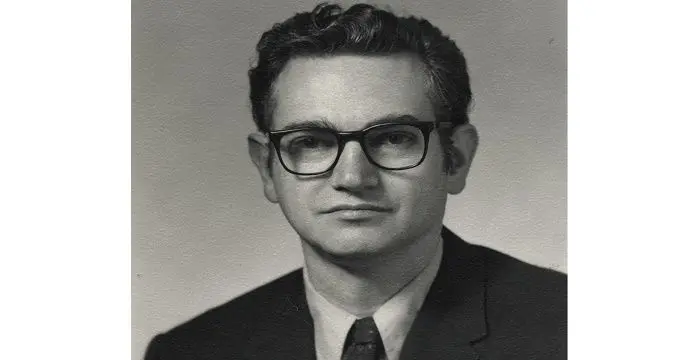
Marshall W. Nirenberg - Geneticists, Career and Life
Marshall W. Nirenberg's Personal Details
Marshall W
| Information | Detail |
|---|---|
| Birthday | April 10, 1927 |
| Died on | January 15, 2010 |
| Nationality | American |
| Famous | Scientists, Geneticists, Biochemists, Geneticists |
| Birth Place | Brooklyn, New York City, New York, United States |
| Gender | Male |
| Sun Sign | Aries |
| Born in | Brooklyn, New York City, New York, United States |
| Famous as | Biochemist and Geneticist |
| Died at Age | 82 |
// Famous Geneticists
Werner Arber
Werner Arber is a Swiss microbiologist and a geneticist who was awarded the Nobel Prize in Physiology or Medicine in 1978. This biography provides detailed information about his childhood, life, career, research, achievements and timeline.
Howard Martin Temin
Howard Martin Temin was an American geneticist and virologist who won a share of the 1975 Nobel Prize in Physiology or Medicine.
Marshall W. Nirenberg's photo
Who is Marshall W. Nirenberg?
Marshall W. Nirenberg was an American biochemist and geneticist who shared the Nobel Prize in Physiology or Medicine in 1968 with Har Gobind Khorana and Robert W. Holley for "breaking the genetic code." He also won several other prestigious awards for his contributions to genetics and biochemistry. Born in New York City, he developed an early interest in biology. As a young man he attended the University of Florida at Gainesville from where he earned his B. Sc. and M. Sc. degrees in Zoology before working for his Ph. D. degree from the Department of Biological Chemistry at the University of Michigan. He eventually became a research biochemist at the National Institutes of Health (NIH) where he initially focused his research on DNA, RNA and protein. In collaboration with H. Matthaei he demonstrated that messenger RNA is required for protein synthesis and that synthetic messenger RNA preparations can be used to decipher various aspects of the genetic code. His groundbreaking research led to his appointment as the head of the Section of Biochemical Genetics at the National Heart Institute, a position he served in until his death decades later. His later research focused on neuroscience, neural development, and the homeobox genes.
// Famous Biochemists
Robert Huber
Robert Huber is a German biochemist and Nobel Laureate. Check out this biography to know about his childhood, life, achievements, works & timeline.
Charles Best
Charles Best was a great scientist and a renowned physiologist who is remembered for being the co-discoverer of insulin. Read this biography to learn about his profile, childhood, life and timeline.
Isaac Asimov
Isaac Asimov was an American professor of biochemistry and a renowned author of science fiction and popular science books. Read this biography to know more about his life.
Childhood & Early Life
Marshall Warren Nirenberg was born on April 10, 1927, in New York City, to Minerva (Bykowsky) and Harry Edward Nirenberg, a shirtmaker. His family shifted to Florida when he was a young boy.
He developed an interest in biology early on. He enrolled at the University of Florida at Gainesville and earned his B. Sc. degree in 1948 and a master's degree in zoology in 1952. He was also a member of the Pi Lambda Phi Fraternity.
As a college student he became interested in biochemistry. He furthered his education at the University of Michigan, Ann Arbor, and earned his doctorate from the Department of Biological Chemistry in 1957. His Ph.D. thesis was on the study of a permease for hexose transport in ascites tumor cells.
Career
In 1957, he began his postdoctoral work with DeWitt Stetten Jr., and with William Jakoby at the National Institutes of Health (NIH) as a fellow of the American Cancer Society (then called the National Institute of Arthritis and Metabolic Diseases). After a couple of years he was made a research biochemist there.
He began to study the steps that relate DNA, RNA and protein in 1959. By this time, previous experiments by other scientists had had shown DNA to be the molecule of genetic information. However, it was not known how DNA directed the expression of proteins, or what role RNA had in these processes.
Nirenberg teamed up with his colleague, the German scientist Heinrich Matthaei, to solve the genetic code and demonstrated that messenger RNA is required for protein synthesis and that synthetic messenger RNA preparations can be used to decipher various aspects of the genetic code.
He was able to establish the rules by which the genetic information in DNA is translated into proteins, and identified the particular codons—a codon is a sequence of three chemical units of DNA—that specify each of the 20 amino acid units of which protein molecules are constructed.
He presented his findings before a small group of scientists at the International Congress of Biochemistry in Moscow in 1961. His discoveries were of great significance to the scientific fraternity and he quickly gained attention for the work he was doing.
In 1962, Nirenberg was promoted to the head of the Section of Biochemical Genetics in the National Heart Institute (now the National Heart, Lung, and Blood Institute), a position he held until his death.
He switched to neurobiology during his later years and performed studies on neuroscience, neural development, and the homeobox genes.
Major Works
Marshall Nirenberg in collaboration with Heinrich Matthaei became the first team to elucidate the nature of a codon, in 1961, at the National Institutes of Health. Using a cell-free system to translate a poly-uracil RNA sequence, they discovered that the polypeptide that they had synthesized consisted of only the amino acid phenylalanine. This discovery led to the deduction that the codon UUU specified the amino acid phenylalanine.
Awards & Achievements
In 1964 he was awarded the National Medal of Science and in 1968, the National Medal of Honor by President Lyndon B. Johnson. He also won the Albert Lasker Award for Basic Medical Research in 1968.
Marshall W. Nirenberg along with Robert W. Holley and Har Gobind Khorana was awarded the Nobel Prize in Physiology or Medicine 1968 "for their interpretation of the genetic code and its function in protein synthesis".
Personal Life & Legacy
Marshall Nirenberg married Perola Zaltzman, a chemist from the University of Brazil, Rio de Janeiro, in 1961. His wife died in 2001 after 40 years of marriage.
He tied the knot for the second time with Myrna M. Weissman, Professor of Epidemiology and Psychiatry at Columbia University College of Physicians and Surgeons in 2005. He had four stepchildren from this marriage.
He suffered from cancer during his last months and died on January 15, 2010, aged 82.
// Famous Scientists
Juliane Koepcke
Juliane Koepcke is a German-Peruvian biologist, who was the lone survivor among the 92 passengers and crew of the ill-fated LANSA Flight 508 that crashed in the Peruvian rainforest on 24 December 1971. Know more about her life in this biography.
Henry Cavendish
Henry Cavendish was a theoretical chemist and physicist, renowned for discovery of hydrogen and calculation of the mass of earth. To know more about his childhood, profile, timeline and career read on
Konstantin Tsiolkovsky
Konstantin Tsiolkovsky was a Russian rocket scientist and a pioneer of astronautics. This biography provides detailed information about his childhood, family, personal life, career, achievements, etc.
Marshall W. Nirenberg's awards
| Year | Name | Award |
|---|---|---|
Other | ||
| 0 | Franklin Medal | |
| 1967 | Gairdner Foundation International Award | |
| 1962 | NAS Award in Molecular Biology | |
| 1965 | National Medal of Science for Biological Sciences | |
| 0 | 1968 - Nobel Prize in Physiology or Medicine | |
| 0 | 1968 - Louisa Gross Horwitz Prize | |
| 0 | 1968 - Albert Lasker Award for Basic Medical Research | |
Marshall W. Nirenberg biography timelines
- // 10th Apr 1927Marshall Warren Nirenberg was born on April 10, 1927, in New York City, to Minerva (Bykowsky) and Harry Edward Nirenberg, a shirtmaker. His family shifted to Florida when he was a young boy.
- // 1948 To 1952He developed an interest in biology early on. He enrolled at the University of Florida at Gainesville and earned his B. Sc. degree in 1948 and a master's degree in zoology in 1952. He was also a member of the Pi Lambda Phi Fraternity.
- // 1957As a college student he became interested in biochemistry. He furthered his education at the University of Michigan, Ann Arbor, and earned his doctorate from the Department of Biological Chemistry in 1957. His Ph.D. thesis was on the study of a permease for hexose transport in ascites tumor cells.
- // 1957In 1957, he began his postdoctoral work with DeWitt Stetten Jr., and with William Jakoby at the National Institutes of Health (NIH) as a fellow of the American Cancer Society (then called the National Institute of Arthritis and Metabolic Diseases). After a couple of years he was made a research biochemist there.
- // 1959He began to study the steps that relate DNA, RNA and protein in 1959. By this time, previous experiments by other scientists had had shown DNA to be the molecule of genetic information. However, it was not known how DNA directed the expression of proteins, or what role RNA had in these processes.
- // 1961He presented his findings before a small group of scientists at the International Congress of Biochemistry in Moscow in 1961. His discoveries were of great significance to the scientific fraternity and he quickly gained attention for the work he was doing.
- // 1961Marshall Nirenberg in collaboration with Heinrich Matthaei became the first team to elucidate the nature of a codon, in 1961, at the National Institutes of Health. Using a cell-free system to translate a poly-uracil RNA sequence, they discovered that the polypeptide that they had synthesized consisted of only the amino acid phenylalanine. This discovery led to the deduction that the codon UUU specified the amino acid phenylalanine.
- // 1961 To 2001Marshall Nirenberg married Perola Zaltzman, a chemist from the University of Brazil, Rio de Janeiro, in 1961. His wife died in 2001 after 40 years of marriage.
- // 1962In 1962, Nirenberg was promoted to the head of the Section of Biochemical Genetics in the National Heart Institute (now the National Heart, Lung, and Blood Institute), a position he held until his death.
- // 1968Marshall W. Nirenberg along with Robert W. Holley and Har Gobind Khorana was awarded the Nobel Prize in Physiology or Medicine 1968 "for their interpretation of the genetic code and its function in protein synthesis".
- // 2005He tied the knot for the second time with Myrna M. Weissman, Professor of Epidemiology and Psychiatry at Columbia University College of Physicians and Surgeons in 2005. He had four stepchildren from this marriage.
- // 15th Jan 2010He suffered from cancer during his last months and died on January 15, 2010, aged 82.
// Famous Geneticists
Norman Borlaug
Norman Borlaug was an American biologist known as the “Father of the Green Revolution”. This biography of Norman Borlaug provides detailed information about his childhood, life, achievements, works & timeline.
George Wells Beadle
George Wells Beadle was an American geneticist who won the 1958 Nobel Prize in Medicine. Check out this biography to know about his childhood, life, achievements, works & timeline.
Gregor Mendel
Gregor Mendel was an Austrian scientist and monk credited with being the father of modern genetics for his pioneering work in the study of heredity. This biography provides detailed information about his childhood, life, achievements, & timeline.
Barbara McClintock
Barbara McClintock was a renowned American scientist who was awarded the Nobel Prize for her pioneering research on genetic transposition. To know more about her childhood, profile, timeline and career read on
James Watson
James Watson is an American molecular biologist and geneticist who played a crucial role in the discovery of the molecular structure of D.N.A. This biography provides detailed information about his childhood, life, achievements, works & timeline
Harold E. Varmus
Harold E. Varmus is an American scientist who won a share of the 1989 Nobel Prize in Physiology or Medicine. This biography of Harold E. Varmus provides detailed information about his childhood, life, achievements, works & timeline.
Marshall W. Nirenberg's FAQ
What is Marshall W. Nirenberg birthday?
Marshall W. Nirenberg was born at 1927-04-10
When was Marshall W. Nirenberg died?
Marshall W. Nirenberg was died at 2010-01-15
Which age was Marshall W. Nirenberg died?
Marshall W. Nirenberg was died at age 82
Where is Marshall W. Nirenberg's birth place?
Marshall W. Nirenberg was born in Brooklyn, New York City, New York, United States
What is Marshall W. Nirenberg nationalities?
Marshall W. Nirenberg's nationalities is American
What is Marshall W. Nirenberg's sun sign?
Marshall W. Nirenberg is Aries
How famous is Marshall W. Nirenberg?
Marshall W. Nirenberg is famouse as Biochemist and Geneticist
